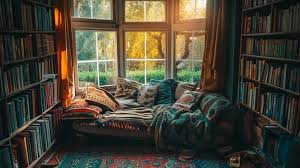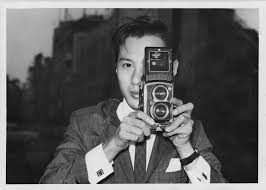
In recent years, the world of interior design has seen a resurgence of retro styles, with vintage aesthetics becoming one of the most coveted trends. From mid-century modern furniture to the bold patterns of the 1970s, the charm of the past is making a powerful comeback. This revival isn’t merely a nostalgic nod to bygone eras—it’s a thoughtful and deliberate movement that blends past and present, bringing timeless designs into modern homes. But what exactly is driving this fascination with retro aesthetics, and why does it resonate so strongly today?
1. Nostalgia for Vintage and Emotional Connection
At the heart of the vintage trend lies a deep sense of nostalgia. As people face a fast-paced, digital, and often unpredictable world, there’s a growing desire to connect with a time when life seemed simpler. Retro designs evoke memories of the past, whether it’s the warm wood tones of mid-century modern living rooms or the playful geometric patterns reminiscent of 1970s wallpapers. These pieces hold emotional value, offering a sense of comfort and familiarity that is increasingly appealing.
Many find joy in surrounding themselves with objects that tell a story. Incorporating vintage elements into a space creates a layered and lived-in atmosphere, grounding the home in history. It’s more than just aesthetics—it’s about creating spaces that feel meaningful and personal, filled with memories, even for those who didn’t live through those times.
2. Sustainability and Eco-Conscious Choices
In a world where sustainability is increasingly prioritized, the rise of vintage aesthetics is also tied to eco-conscious design. Many people are gravitating toward vintage furniture and décor because they recognize the environmental benefits of choosing second-hand or refurbished items over mass-produced, disposable alternatives.
Repurposing and upcycling retro pieces reduces waste and minimizes the demand for new manufacturing, which often involves harmful production practices. Antique furniture, in particular, tends to be of higher quality, crafted from solid wood and built to last—unlike many of today’s fast-furniture options.

By giving new life to old objects, homeowners not only add unique character to their spaces but also make a positive impact on the environment. In this sense, retro design is not just a trend, but part of a broader movement toward conscious consumerism and sustainability.
3. Mixing Vintage with New
One of the most exciting aspects of the vintage revival is its ability to seamlessly integrate with modern design. Designers today are not replicating the past but reimagining it, mixing retro elements with contemporary styles to create something fresh and dynamic.
For example, a classic Eames chair can sit comfortably in a sleek, minimalist living room, adding warmth and texture to an otherwise modern space. Bold, patterned wallpaper from the 1960s can act as a statement wall in a contemporary bedroom. Vintage lighting fixtures, like brass chandeliers or frosted glass sconces, can be paired with modern furniture for a unique, eclectic vibe.
This juxtaposition of old and new allows for a personalized, layered approach to design. It’s not about adhering to one era but combining influences to create a space that feels both timeless and on-trend.

4. The Appeal of Craftsmanship of Vintage Decor
One of the key reasons vintage aesthetics are making a comeback is the growing appreciation for craftsmanship and quality materials. In an era of mass production and disposable goods, people are yearning for pieces that feel authentic and well-made.
Furniture from the mid-century period, for instance, was known for its emphasis on craftsmanship, with pieces often made from rich woods like teak, walnut, or rosewood. These materials have stood the test of time and, when well-preserved, can bring a sense of elegance and durability to any room.
Vintage design also embraces artisanal techniques, from handwoven textiles to intricate wood carvings, which are increasingly rare in today’s fast-paced manufacturing processes. This renewed interest in craftsmanship aligns with a larger cultural movement that values slow design, where quality is prioritized over quantity.
5. Unique, One-of-a-Kind Pieces
In a world where mass-produced goods dominate, many people are seeking ways to make their spaces stand out. Vintage furniture and décor offer an easy way to introduce unique, one-of-a-kind pieces into a home. No two antique items are exactly the same, and incorporating vintage elements guarantees that your space will feel distinct and personal.
Whether it’s a 1970s rattan chair, a retro record player, or a mid-century credenza, these items bring character and history that mass-produced furniture often lacks. People want their homes to reflect their individuality, and vintage design offers endless opportunities for self-expression.

Moreover, hunting for vintage treasures—whether at flea markets, antique stores, or online—can be an enjoyable, rewarding process. Finding the perfect piece is like discovering a hidden gem, and that satisfaction adds a personal connection to the overall design.
6. Playful Patterns and Bold Colors
Retro design is known for its playful use of patterns and bold color schemes. From the vibrant oranges and avocado greens of the 1970s to the geometric prints of Art Deco, vintage aesthetics embrace the power of color and design to create dynamic spaces.
In today’s interiors, these retro patterns and hues are being reinterpreted in fresh, modern ways. Designers are playing with wallpaper that evokes the florals of the 1960s or reintroducing terrazzo surfaces, once popular in mid-century design, into kitchens and bathrooms. These vibrant, eye-catching elements provide a break from the muted, minimalist trends of recent years, offering a more playful and adventurous approach to design.
7. The Influence of Pop Culture
The rise of vintage aesthetics can also be attributed to pop culture, particularly the popularity of TV shows, films, and music that celebrate retro eras. Shows like Mad Men sparked a renewed interest in mid-century modern interiors, while 1980s-inspired aesthetics have made a comeback thanks to series like Stranger Things.

This cultural revival of the past influences how people want their spaces to look and feel. The visual language of these decades, with their iconic furniture and bold design choices, has become part of the collective imagination, making retro design feel both familiar and aspirational.
Conclusion: A Timeless Trend with Modern Appeal
The revival of retro aesthetics in interior design is not just about looking back—it’s about reinterpreting the past in a way that feels relevant today. From sustainability to craftsmanship, emotional connection to individuality, vintage design offers a rich, multifaceted approach to creating spaces that are meaningful, stylish, and unique.
As we continue to navigate a world of constant change, the comfort and timeless appeal of retro design serve as a welcome reminder that sometimes, looking to the past can be the key to creating something truly innovative for the future.
By: Rachel D. Knepp



One comment on “The Retro Revival: 7 Keys to Vintage Design”